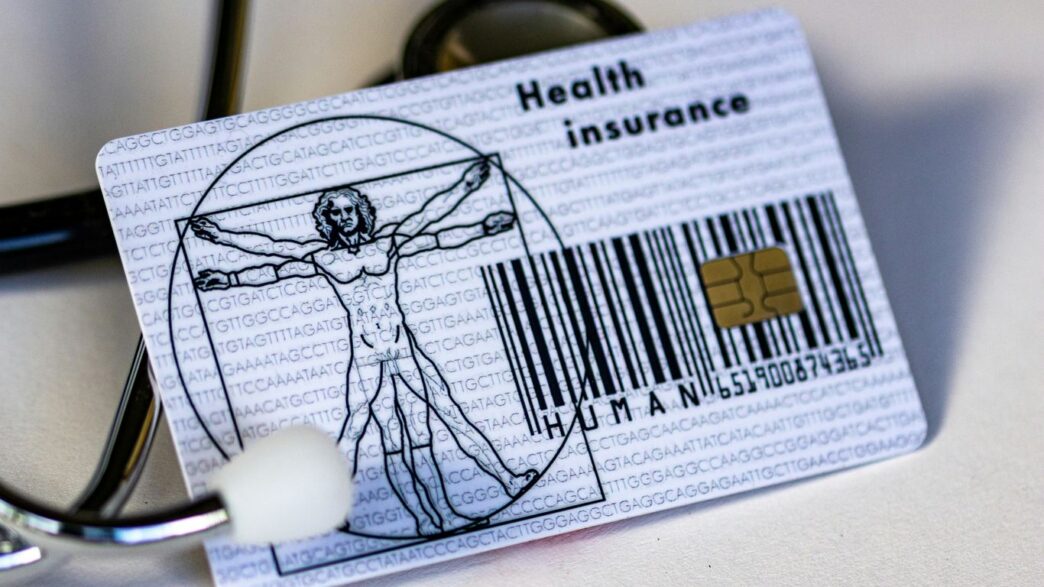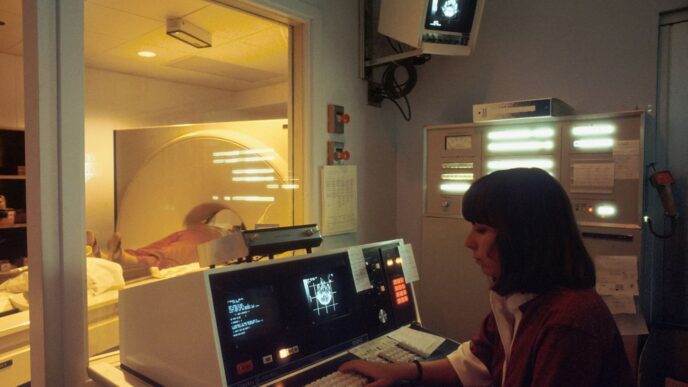Healthcare runs on data, but that data is only as useful as it is safe and well-managed. In 2025, the push for better data governance in healthcare is stronger than ever. With new rules, more digital tools, and higher patient expectations, keeping information private, accurate, and ready when needed is a daily challenge. Good governance isn’t just about following laws—it’s about building trust with patients, making smarter decisions, and running smoother operations. This article looks at how healthcare organizations can build solid strategies for secure and compliant patient data management in the year ahead.
Key Takeaways
- Clear roles and responsibilities help everyone know who manages and protects patient data.
- Strong data governance in healthcare builds patient trust and supports better care decisions.
- Keeping up with changing laws like HIPAA and GDPR means having up-to-date policies and regular training.
- Using the right tools—like access controls, encryption, and audit logs—keeps patient data safer.
- Starting with small, focused projects and working across departments makes data governance more effective and sustainable.
Key Principles Guiding Data Governance in Healthcare
Managing patient information in healthcare isn’t just a paperwork chore—it’s now a central part of running any modern clinic or hospital. A tight grip on data governance helps avoid chaos and keeps everything ticking along securely and smoothly. Let’s walk through the main ideas you’ll see in any effective approach to data governance, especially as we look at 2025 and beyond.
Defining Roles and Responsibilities
The first thing you need is clarity about who does what. Without this, mistakes happen, accountability disappears, and patient information gets mishandled.
- Assign specific data governance roles (such as data stewards or custodians)
- Spell out responsibilities for handling, sharing, and securing patient data
- Set up simple processes for reporting mistakes or data incidents
Teams can’t just assume someone else is double-checking data entries or privacy rules. For a more structured explanation, this overview covers the assignment of rules and processes in healthcare data governance.
Embedding Patient-Centric Policies
Healthcare isn’t only about technology; it’s about people. Policies focused on patients put trust and transparency front and center. Everyone wants to know their details are safe and only used with permission.
A patient-centered policy will:
- Clearly state what data is collected and why
- Make it easy for patients to give or withdraw consent
- Routinely review policies as both technology and patient needs change
Continuous Training and Awareness
Rules on paper don’t mean much if no one follows them, right? That’s where ongoing training comes in. Mistakes, even small ones, can impact care quality or privacy.
Some core elements of training programs in this context:
- Regular updates for all staff, not just IT teams
- Simple, hands-on lessons using real healthcare examples
- Quick refreshers when policies or regulations shift
A strong data governance approach is always about real people making smart choices. You don’t need buzzwords—just clear rules, patient-first thinking, and regular reminders that the stakes are high. When roles, policies, and training come together, healthcare data governance is far less risky and a lot more reliable.
Critical Challenges Impacting Healthcare Data Governance
Managing patient data in healthcare isn’t just a technical problem—it’s a daily juggling act. Healthcare organizations are trying to align new technology, staff habits, and never-ending regulations, and let’s face it, there are plenty of places where things can go off the rails.
Overcoming Data Silos and Fragmentation
Healthcare data lives all over the place: electronic medical records, lab systems, pharmacies, insurance portals, and even patient mobile apps. When these systems can’t talk to each other, vital information falls through the cracks. It’s kind of like having tiny pieces of a puzzle scattered around your house—hard to see the full picture until everything’s in one place.
A few side effects of siloed healthcare data:
- Patients end up repeating the same medical history over and over.
- Tests get duplicated because nobody saw the last result.
- Doctors might miss something important locked away on another system.
Addressing these issues often means adopting shared data standards and actively working on connecting systems together, similar to how some hospitals now merge lab and EMR records. It’s not simple, but the payoff is clearer, safer patient care. Even basic steps bring visible, direct improvements, and that’s what counts. Check out recent healthcare data quality findings underscoring how scattered, poor data affects everything from care to operations.
Addressing Data Quality and Standardization Issues
Let’s be honest—healthcare data is messy. Misspelled names, forgotten allergies, and all sorts of odd formats get entered every day. Once those errors are in, they spread everywhere: billing files, treatment plans, lab orders. Correcting them is frustrating work that can slow the system down and erode trust.
Here’s how some organizations are trying to clean things up:
- Assigning data stewards to keep tabs on the quality of critical records
- Running regular audits to spot and fix broken or outdated data
- Training everyone on why details matter—because even a small typo can throw the whole process off
Organizations that make quality a habit see real improvements in patient care and fewer headaches dealing with insurance or compliance. Good data makes everyone’s job easier, plain and simple.
Navigating Complex Regulatory Landscapes
Regulations in healthcare are a moving target. HIPAA, GDPR, and new state-level laws pop up with new requirements year after year. Trying to keep patient data safe and private under these overlapping rules can feel like trying to fix a leak in a boat that’s already out to sea.
A few common regulatory challenges:
- Keeping consent forms and privacy agreements consistent across every system
- Making sure access logs and audit trails meet different legal standards
- Responding to new laws fast, before penalties or risks pile up
Most organizations assign a compliance officer or set up monitoring tools to keep up. Flexibility is key—when the rules change, processes need to shift quickly. Staying on top of regulations isn’t a one-time win; it’s a never-ending marathon.
| Challenge | Symptoms | Practical Fix |
|---|---|---|
| Data Silos & Fragmentation | Duplicate tests, incomplete records | System integration, standards |
| Poor Data Quality & Lack of Standardization | Billing errors, care gaps | Data audits, role training |
| Regulatory Uncertainty | Audit failures, legal risk | Flexible compliance, monitoring |
In the end, data governance in healthcare means rolling up your sleeves and tackling these issues head-on, day after day. The more you chip away at them, the better it gets for everyone—patients, staff, and even the bottom line.
Regulatory Compliance Strategies for Patient Data Management
Keeping patient data safe and staying compliant with laws is a moving target, especially in healthcare where things can change fast. Rules like HIPAA in the US or GDPR in the EU aren’t just boxes to check; they’re the playbook for protecting patients and keeping the trust of everyone involved. In 2025, organizations that manage patient data without a plan for staying on top of these regulations are probably going to run into trouble sooner or later. Let’s break down how to approach compliance the right way.
Aligning with HIPAA, GDPR, and International Laws
Healthcare organizations often have to juggle more than one set of rules, especially if they treat patients from different regions. Here’s what usually needs to happen:
- Map out where all patient data comes from and where it goes.
- Identify which rules apply to each type of data (for example, US patient info usually means HIPAA, but if you’re treating someone from the EU, GDPR comes into play).
- Regularly review law and standard updates, since both HIPAA and GDPR have seen changes lately, especially around breach reporting and patient rights.
Key differences and similarities between HIPAA and GDPR:
| Feature/Requirement | HIPAA (US) | GDPR (EU) |
|---|---|---|
| Scope | Health info (PHI) | Any personal data |
| Consent Models | Implied (for care) | Explicit, granular |
| Breach Notification Deadline | 60 days | 72 hours |
| Right to Access/Edit Data | Yes | Yes |
| Penalties | Fines, civil/criminal | Major fines (up to 4% GP) |
Your best bet is to assume the strictest requirements, especially if you have international patients.
Building Transparent Consent Management Practices
Consent is more than a form with a signature now. Regulators expect that patients actually understand what’s happening with their data. Here’s what modern consent management should look like:
- Plain language explanations for each type of use (treatment, research, billing, etc.).
- Mechanisms for patients to say yes or no to different things (granular consent).
- Easy ways for patients to withdraw or change their consent down the line.
- Audit-ready records showing when and how consent was obtained or changed.
If you’re dealing with GDPR, the principle of transparency means you’ve got to explain everything clearly and record the details.
Streamlining Audit Trails and Documentation
If there’s one thing regulators pay close attention to, it’s the paper trail. Without solid records, proving compliance is nearly impossible. To make audits less stressful:
- Keep detailed logs of data access, edits, and sharing.
- Document every policy and procedure around data handling, not just the big ones.
- Have a system in place for regular internal checks (mock audits help catch gaps before a real audit does).
- Make sure logs are tamper-resistant and backed up somewhere safe.
Having strong documentation isn’t just about being ready for an audit. It’s a safety net when things go wrong and you need to show exactly what happened and why.
Staying compliant is a cycle, not a one-time job. The law isn’t going to slow down, so organizations need to keep tuning their compliance processes, reviewing new rules, and making sure everyone knows their part. That’s how you keep patient data safe—and regulators satisfied.
Technical Pillars of Secure Data Governance in Healthcare
Building solid data governance in healthcare means keeping information safe, private, and reliable—no small task. What follows are the nuts and bolts that keep patient data secure and accessible.
Implementing Advanced Access Controls
Controlling who can see what in a healthcare organization is trickier than it sounds. Roles shift, emergencies come up, and research teams may need just parts of a patient’s file. Role-based access, time-limited permissions, and automatic audits all help manage who’s looking at sensitive records.
Key steps:
- Use role-based and attribute-based access systems to control data visibility.
- Review and update access lists when staff change roles.
- Track and log every access event for review.
| Access Control Feature | Why It Matters |
|---|---|
| Role-Based Permissions | Gives right info to right staff |
| Automated Access Reviews | Removes access for ex-staff |
| Audit Logs | Tracks all data access |
| Emergency Override Mechanisms | Enables fast care safely |
Leveraging Data Discovery and Cataloging Tools
Trying to manage healthcare info without a solid inventory is like searching for a file in an overflowing junk drawer. Automated discovery and cataloging tools scan all systems and map out where data sits—this is what makes compliance doable and audits less painful.
Some things modern catalogs handle daily:
- Find and sort sensitive data from various systems automatically.
- Keep track of how info flows between applications.
- Tag records for sensitivity level, retention, and purpose.
Regularly using these tools makes it easier to spot outdated or duplicate records, and it gives staff a clear view of the data landscape.
Utilizing Robust Encryption and Monitoring
Encryption is the lock on the front door, but monitoring is like the security cameras—all are needed to keep out trouble. Data in transit and at rest should always be scrambled with up-to-date algorithms. At the same time, real-time monitoring software keeps an eye out for strange activity or possible breaches.
- Encrypt patient data wherever it goes: emails, archives, backups.
- Use intrusion detection tools to spot abnormal trends.
- Set up quick-alert systems for suspicious activity.
Healthcare organizations that mix encryption with live monitoring stop more threats and respond faster to issues. Regular reports and alerts keep security teams aware without drowning them in noise.
In the end, getting these technical pillars right helps everyone—doctors, admins, patients—feel confident that the rules are being followed and the data is actually safe.
Establishing Data Quality and Interoperability Standards
One of the messiest things in healthcare is figuring out how to keep patient data accurate and usable across dozens of systems. If you’re still cobbling together info from different platforms, you know the headache. Without clear quality and interoperability standards, nobody trusts the data and everyone wastes time double-checking (or worse, repeating tests).
Defining Measurable Data Quality Metrics
It’s not helpful to say, “this data looks good enough.” Organizations need hard rules for what "good data" actually means:
- Accuracy: The data reflects what really happened (no made-up blood pressure numbers).
- Completeness: No gaping holes—if a patient’s birthday is missing, that’s a problem.
- Consistency: The same data point doesn’t mean different things in two places.
- Timeliness: Outdated lab results are just noise.
- Validity: Data fits standard formats (imagine phone numbers that are actually phone numbers).
- Uniqueness: No duplicate records—nobody wants two versions of the same patient.
Setting these standards upfront makes it much easier to spot and fix issues before they reach doctors or analysts.
Example Table: Common Healthcare Data Quality Metrics
| Metric | What It Means | Why It Matters |
|---|---|---|
| Accuracy | Matches real world events | Reduces misdiagnosis risk |
| Completeness | Nothing missing | No care gaps |
| Consistency | Always the same meaning | Reliable analytics |
| Timeliness | Info isn’t stale | Supports quick decisions |
| Validity | Proper format | Fewer system errors |
| Uniqueness | No duplicates | Clear patient histories |
Standardizing Health Data Exchange Protocols
Trying to get systems talking to each other smoothly? You have to agree on the language first. That’s where exchange protocols come in. It seems painful at first, but enforced standards mean data from one hospital’s EHR won’t come out as unreadable nonsense in another’s system.
Typical steps include:
- Adopting shared vocabularies (like HL7, FHIR, SNOMED CT, or LOINC).
- Creating templates for how to record things like lab results or discharge notes.
- Using the same rules for how data gets sent, stored, and updated.
When everyone’s on the same page, moving data for patient transfers, research, or public health reporting is a lot less stressful.
Regular Validation and Cleansing Processes
You can’t just set these standards and walk away. Healthcare data is constantly changing—patients switch providers, new therapies roll out, new regulations pop up. To keep up:
- Run automated audits: Scanning for duplicate records, incomplete entries, or weird outliers.
- Schedule periodic reviews: At least every quarter, someone should check that the rules actually fit current needs.
- Clean as you go: Whenever errors pop up, have processes ready to fix them—they don’t just go away on their own.
If this sounds like a lot, it kind of is. But sloppy data leads to bigger problems in patient care and compliance. Keeping these standards alive is one of the few things that pays off every single day.
Unlocking Operational Benefits Through Effective Data Governance
The practical perks of well-run data governance in healthcare often go unnoticed, but they show up in how smoothly clinics and hospitals run day to day. Solid data governance reduces wasted time, slashes unnecessary costs, and keeps both patients and clinicians happier. Let’s walk through the operational wins you’ll see when the organization takes patient data seriously.
Increasing Clinical and Administrative Efficiency
When everyone sticks to the same playbook for handling patient info, all the pieces just fit better. Here’s what starts to improve:
- Less duplicate paperwork and fewer manual fixes on records.
- Faster, cleaner communication between teams.
- Reporting and analytics don’t get delayed because the data is all in one place.
Let’s compare how efficient (or not) things can be:
| Area | With Governance | Without Governance |
|---|---|---|
| Record lookup time | 2 min | 8 min |
| Duplicate entries | 1% | 9% |
| Data access issues | Few | Frequent |
One thing that sometimes gets overlooked? When there’s a breach or cyberattack, it’s easier to pinpoint problems and fix them—security threats become much less of a headache.
Empowering Data-Driven Decision Making
Strong governance means leaders can actually trust the numbers. This shows up in:
- Decisions that aren’t based on guesswork, but on up-to-date info.
- Clinical teams using real-world data to adjust care plans.
- Anyone running reports gets answers they know are accurate.
Clinicians and managers may be slightly skeptical at first, but once policies are set, confidence in the data goes up—a win for everyone.
Facilitating Innovation in Patient Care
Good governance isn’t just about fixing old problems. It also sets up healthcare for what’s next:
- Easier adoption of new analytics, AI, or digital tools.
- Better participation in research thanks to clean, usable datasets.
- More reliable collaboration across health systems.
With all the right steps and policies, governed data actually becomes something to build on, not just a mess to clean up. Before long, new projects roll out quicker, and there’s more room for testing new ideas.
In summary, effective data governance is what lets healthcare organizations handle more today—and prepare for tomorrow—with less fuss, fewer mistakes, and more peace of mind.
Best Practices for Sustainable Healthcare Data Governance
Building a sustainable data governance program in healthcare isn’t about deploying a giant, complex framework right away. It’s more about taking smart, practical steps, repeating what works, and adjusting as needs change—because the world of healthcare data never sits still. Here’s how to keep data governance working for the long term.
Starting with High-Impact Pilot Projects
It’s tempting to want to fix every problem at once, but that usually backfires or burns out the team. Instead, start by:
- Identifying areas in the organization with obvious pain points, like duplicate patient records or delays in care because information is missing.
- Picking focused initiatives, like cleaning up a single data source or improving a consent capture workflow, before rolling out systemwide changes.
- Setting clear, measurable goals for each pilot so you can prove results. For example, track the reduction of duplicate records in the EHR next quarter.
Usually, it’s easier to get buy-in for bigger changes after a successful pilot.
Fostering Cross-Functional Collaboration
Healthcare data governance can’t work in a vacuum or with just one team. People from clinical, administrative, legal, and IT groups all play a role. Some ways to build a collaborative culture:
- Set up regular meetings with teams who collect, use, and manage patient data.
- Define data stewards who act as go-betweens, translating clinical needs into technical requirements.
- Encourage feedback from front-line staff, since they’re the ones dealing with data problems every day.
It helps to use modern collaboration tools or cloud-based solutions—Padmasree Warrior made a good point about updating security systems and adapting to new technologies to boost productivity and ensure data security.
Embracing Continuous Improvement and Measurement
There’s no such thing as "done" when it comes to managing data. Healthcare systems, regulations, and technology keep evolving, so governance needs regular check-ups. Good habits here include:
- Tracking key metrics, like percentage of standardized records, audit pass rates, or time spent resolving data issues
- Scheduling periodic reviews of governance policies, making it easy to adjust as new challenges or tech appear
- Creating dashboards to share progress with both leadership and front-line teams
Here’s a quick example of metrics healthcare organizations might track:
| Metric | Target (2025) | How Often Reviewed |
|---|---|---|
| Duplicate record rate | < 1% | Monthly |
| Audit log completion | 100% | Quarterly |
| Compliance incident response | < 48 hours | Annually |
By going step by step—starting small, working together, and always looking for ways to improve—healthcare organizations can stop putting out fires and set up data governance that really lasts.
Conclusion
Wrapping things up, data governance in healthcare isn’t just a buzzword—it’s a real necessity. With so much sensitive patient info floating around, and new rules popping up every year, it’s easy to feel overwhelmed. But the truth is, a solid data governance plan makes life easier for everyone. Doctors get the info they need, patients feel safer, and compliance doesn’t have to be a mad scramble every time there’s an audit. Sure, it takes some work to set up the right policies, train staff, and keep up with tech changes, but the payoff is worth it. Better data means fewer mistakes, smoother operations, and more trust all around. As we head into 2025, healthcare organizations that take data governance seriously will be the ones ready for whatever comes next—whether that’s new technology, stricter laws, or just the everyday challenges of patient care.
Frequently Asked Questions
What is data governance in healthcare?
Data governance in healthcare means setting up rules and processes to make sure patient data is accurate, safe, and used the right way. It helps doctors, nurses, and staff trust the information they use to care for patients.
Why is data governance important for hospitals and clinics?
Good data governance keeps patient information safe from mistakes and hackers. It also helps healthcare organizations follow laws like HIPAA and GDPR, so they avoid big fines and earn patients’ trust.
How does data governance help protect patient privacy?
Data governance uses things like passwords, access controls, and encryption. It also tracks who looks at or changes patient records. This keeps personal health details private and only lets the right people see them.
What are the biggest challenges with healthcare data governance?
Some big problems are data being stored in different places, not having the same format, and making sure everyone follows the rules. It can also be hard to keep up with changing laws and train staff on new policies.
How can healthcare teams improve data quality?
Teams can check data for mistakes, use the same formats for all records, and clean up old or duplicate information. Regular training and using special tools can also help keep data up to date and reliable.
What are some best practices for starting a data governance program?
Start small by fixing a common problem, like duplicate patient records. Make sure everyone knows their job, work together across departments, and keep checking and improving your rules and processes over time.














